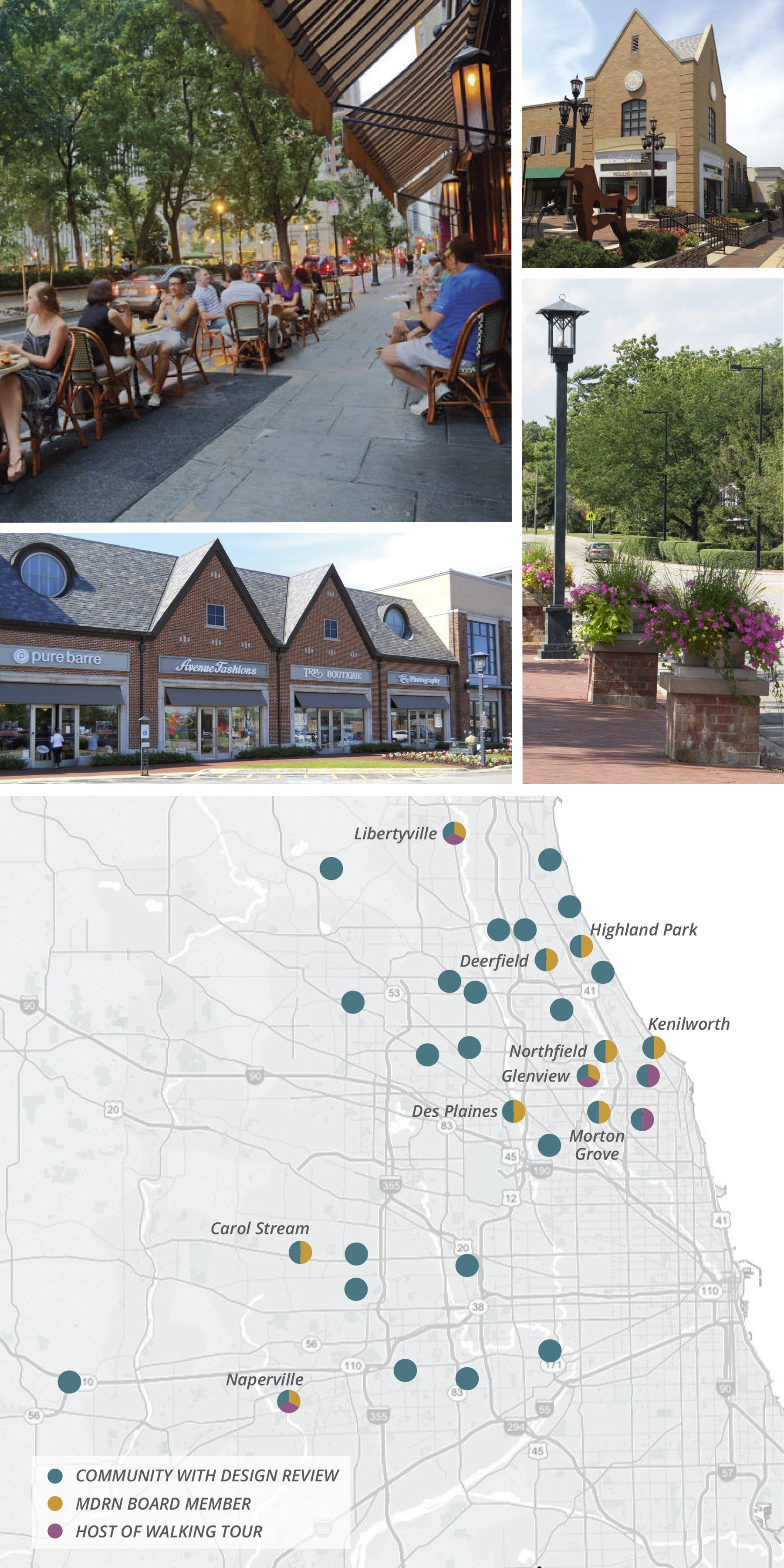
While architectural design review by municipal governments in the United States has roots dating back to the historic preservation movement, in Illinois, the use of this form of review has varied with the local history and culture of individual suburbs. In the Chicago metropolitan area, design review was institutionalized through a first wave of “appearance codes” adopted in the 1970s. This provided the initial legal framework to support design review requirements for architecture, landscaping and signage.
Throughout Illinois, several different models of design review are used. The Architecture Review Commission (ARC) method establishes a separate board, comprised of architects or a mix of citizens/design professionals with delegated authority for making design decisions, in most cases exclusively for developments in commercial areas. The more traditional Plan Commission structure, by comparison, often relies on a committee or subgroup of the commission. Increasingly, communities are assigning a greater role to the staff director of the community development department through a process often called “administrative” design review. Each of these approaches involves initial (and often) informal discussion, followed by a formal meeting or hearing (usually with a designated committee or Commission) and some form of legal appeal.
Following the success of the dramatic designs featured in Millennium Park, awareness and evidence for the value of quality architectural and landscape design has grown in Chicago and beyond. Researchers have noted the benefits of “design dividends” for property values and neighborhood vitality. Out of this idea, the Municipal Design Review Network (MDRN), a unique networking forum based at DePaul University, was established to provide guidance on and innovative approaches to design review. Several planning professionals, with support from the Village of Glenview, initiated the MDRN as a venue for communities with design review boards or staff to share best practices. This launched a range of related programs and services to encourage collaboration.
MDRN participants soon formed an advisory committee tasked with creating an annual schedule of events and programs aimed at providing networking opportunities, topics for discussion, and access to experts in the field. Activities include symposiums, onsite tours, and technical workshops, often co-sponsored with state land-use organizations. The Network also periodically releases publications, such as a recent piece exploring the value of design and highlighting economic studies regarding the importance of local quality of life in attracting new businesses, particularly in high-tech industries. Over 100 municipalities are represented within the Network, and more than 1,000 government officials, staff and professionals have participated in its activities since 2007.
Given existing economic and political challenges, rapid suburban development, and new legal issues, many communities are reassessing their approaches for design review. Typically, Design Guidelines have been used to clarify local expectations for building materials, sign regulation, landscaping, lighting and particular conservation or environmental concerns. Recent trends involve greater reliance on illustrated guidelines and additional delegation to specialized staff for expedited “administrative” review of routine matters. Some municipalities are now considering combining commissions, which have, in the past, been involved in aspects of site and design review (e.g. some suburban villages have merged separate appearance review into a subcommittee process for planning approval).
The strong interest in MDRN demonstrates how municipalities can benefit from inter-governmental collaboration to refocus on the value of quality design and development. Village Boards and staff have the opportunity to learn from others’ experience. Improved design review processes promote local economic development — and when coordinated — avoid unnecessary jurisdictional disputes. Moreover well-structured local processes can assure that development projects contribute to the community by creating places of lasting value where people want to live and work.

John Hedrick | Chaddick Institute for Metropolitan Development
John Hedrick, an attorney and consultant, was a founder of the Municipal Design Review Network and works with DePaul’s Chaddick Institute for Metropolitan Development as a Senior Fellow. Readers interested in MDRN are invited to email mdrn@depaul.edu